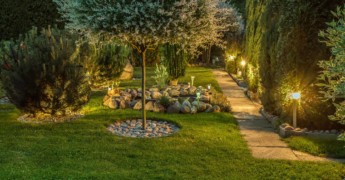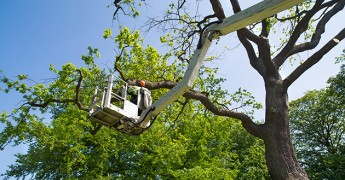Fall Tree Care: The Top Fall Maintenance Tips for Your Trees

Ahhh, the fresh, beautiful, grandfathers of the plant realm: trees.
Who couldn’t love these serene, large creatures? One of them alone converts around 48 pounds of carbon dioxide per year, giving us the air we breathe.
Since they take care of us, it seems only fair that we take care of them.
The best time to do tree maintenance is in the fall before the harsh winter season hits.
Here are some fall tree maintenance tips to do on your property so you can keep them happy and healthy.
Feed Them
If your trees didn’t receive enough moisture in the summer (common in areas that experience drought), now is the time to give them some before winter comes.
It would also be wise to do a pH and nutrient check in the soil near your trees. This will let you know if you need to give them any nutrients.
The health of the soil directly relates to the health of your trees (and plants in general). Be sure to look into this if you want them to be healthy.
Give Them A Natural Blanket
By natural blanket, we mean mulch. Mulch comes in many forms, such as decaying leaves, bark, or compost.
It helps your trees keep water in and cold temperatures out (hence the “blanket” reference). This is especially important for young trees.
Leave 6 inches of space between the mulch and the base of the tree to prevent fungi from growing.
The Best Fall Tree Advice: Prevent Injury
We’re talking about injury to the tree and injury to yourself and your property.
The best way to prevent all of the above is to prune damaged or cracking branches. You’ll want to remove strategically and little at a time, so as to not shock the tree.
If you don’t do this, ice or snow can weigh down the branches and cause them to break off. This type of accident results in over 100 fatalities per year, due to being in the wrong place at the wrong time.
Pruning also allows more light to get to the healthy branches, letting your trees be as efficient as possible.
Another way you can prevent injury is to cable or brace the limbs that aren’t completely bunk but aren’t as strong.
These tips aren’t as easy as it seems. Done incorrectly, they could possibly overwhelm your trees, resulting in their sickness or death. Consider consulting an arborist (tree care professional) to help you out.
Remove What’s Unnecessary
This includes dead trees and unwanted saplings.
For dead trees, you should first make sure that it’s actually dead and not sick. The two look very similar, showing signs of dead wood, cracks, and poor tree growth.
Again, you should consult a professional to assess this. If the tree is actually dead, it is a feeding and breeding place for pests and disease, which isn’t good for the healthy plants on your property.
The second part of removing the unnecessary is considering unwanted saplings. We mentioned the importance of trees and how much we should love them (naturally), so unwanted saplings only refers to those growing so close to your house that their roots can cause damage.
Remove these in the fall, before their roots injure your foundation.
Prepare For Winter
Most of our fall tree tips revolve around preparing for winter, the most difficult time for trees.
It’s essential that your trees receive this care before the freezing months.
If you don’t have the time, tools, or expertise to do it, don’t worry. Give us a call when fall comes around so we can keep your trees on the right track.
In the meantime, keep reading our blog for more tree care tips and advice.






You must be logged in to post a comment.